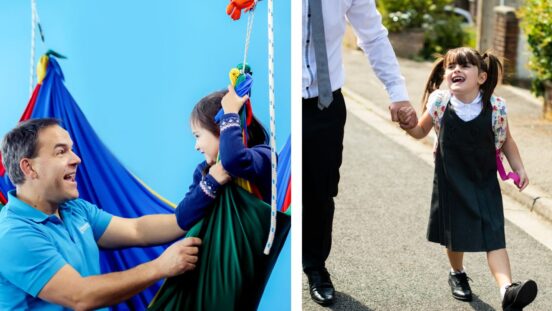Preparing children with special educational needs for school

“Prioritising emotional development is key.”
By Dave Jereb
Approaching a new school year brings a mix of emotions for both parents and children, including those with neurodiverse needs. The return to school, especially after a challenging previous year, can also evoke various feelings.
Contrary to popular belief, successful preparation for starting school isn’t about academics – knowing your letters, numbers or colours, or writing your name. They can learn these at school.
What is more challenging to teach is trust and connection, and supporting them to feel safe, not just physically but also emotionally.
Stephen Porges, creator of Polyvagal Theory, tells us that “not being scared is not the same thing as feeling safe”.
Mental readiness for learning is rooted in having strong connections to others and ourselves. This connection lights up our brains making them ready for learning and engagement. Prioritising emotional development is key.
How to best prepare a child with special educational needs for school
Tune into your feelings
The first step is understanding how you are feeling about this transition. There’s no right or wrong. Some parents are nervous, some are ecstatic. Whatever you feel, allow yourself to feel that. Kim Barthel, presenter of ‘Becoming a Behavioral Detective – Understanding and Supporting Complex Behavior’, tells us that the goal is not to feel a certain way but to be able to “feel your feelings, express your feelings, and move your feelings”. When you recognise how you feel, you have a better capacity to control how you feel.

Tune into your child’s feelings and meet them where they’re at
Once you recognise how you feel, you will be better able to recognise how your child feels. This may be the same as you or very different. Once you can recognise how your child is feeling, you can support them to tune into their own feelings, express their feelings and feel empowered to shift their feelings.
Meeting your child where they are emotionally is crucial during this transition. It’s okay if you and your child have different feelings about the new school year. The goal is not to express positive feelings but rather to stay connected with each other and yourselves.
Make the unknown known and share the positives
While you understand what school is like, your child does not. Hopefully they’ve had a chance to visit the school, meet some kids and teachers, get a tour, and even try some activities and games. These are all great. If possible, visit the school in the holidays, play on the field, look in the classroom windows. You can take photos or print pictures from the internet and make a book about school. Include all the fun things they will do.
Eat meals at times that match the school routine and pack your child’s lunchbox together. Familiarity feels safe. See if you can get a photo of your teacher to add to your book. Our Kindy teacher gave us a tour of the classroom and lent our child one of her own books. It felt special to be trusted with the book and he was excited to see her again and return it.
Reading and conveying cues
Beyond understanding their emotional feelings, we can support children by reading their cues and helping them understand their own body’s signals. For example, “Your body is wriggling – I’m wondering if you need to go to the bathroom?” or “You look warm, I wonder if you are feeling thirsty”. Teaching your child to interpret these cues and seek assistance when needed empowers them to manage their needs independently.
In my book ‘Challenging the Story: A Surprisingly Simple Approach to Supporting Children with Challenging Behaviours’, Emma, a young autistic girl, is starting to explore playing with others. However, due to her poor planning, her hand gesture surprises them as she reaches out. Coaching her to communicate her intentions through gestures, helping her peers to understand, and encouraging educators to facilitate these interactions can make a significant difference.

Communication
Children with additional needs may also need help to communicate their needs. If your child has difficulty communicating, consider consulting a speech pathologist. They can provide valuable support in developing communication strategies, including words, actions, visuals, and Augmentative and Alternative Communication (AAC). These tools enable children to effectively express their needs and seek assistance.
Focus on connection
A connected brain is a brain that is primed for learning and engagement. Focus on creating moments of joy, fun, play, and laughter. Encourage interactions with peers by arranging playdates or year group meetups. Many kindergarten classes have parent-initiated Facebook groups and summer gatherings to facilitate connections. Additionally, establishing a strong connection between your child’s teacher, school, early childhood educators, and therapy team is invaluable.
Conclusion
School readiness, regardless of your child’s needs, is about fostering your child’s innate curiosity and desire to learn. This begins with feeling safe, secure, and connected to ourselves and others. As adults, our role is to support this journey with empathy and understanding. Connection is the key. For us, that’s connection to ourselves, our child, their educators and their therapy team. For our child it means connection to themselves, to us, the caring adults at school and their peers. It all starts with feeling safe and developing their capacity to feel their feelings, express their feelings and move their feelings.

Dave Jereb is a Paediatric Occupational Therapist with over two decades of experience, Co-Founder of MoveAbout Therapy Services and the author of ‘Challenging the Story: A Surprisingly Simple Approach to Supporting Children with Challenging Behaviours’.




